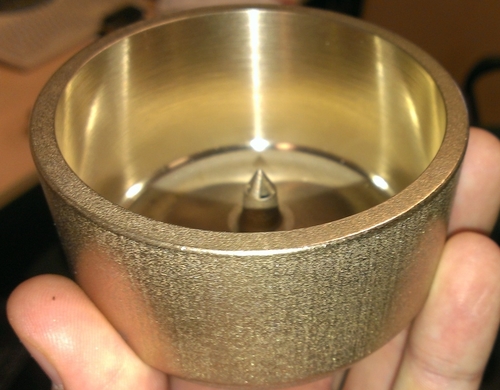Metal Printing
Metal printing is a fast, relatively inexpensive technology for 3D printing metal parts. It produces lightweight and economical parts, sand molds, and prototypes for short-run production. Unlike DMLS printing, however, metal printing is only compatible with stainless steel bronze alloy.
Metal printing is excellent for creating sand molds and cores. Like all 3D printed metals, it is able to produce complex geometries, such as spiral vents and nested cores, that would be impossible to produce with traditional manufacturing technologies like CNC machining. Because it has no lead times or tooling costs, it is faster and less expensive than other technologies for very small batches.
For production quantities, however, Direct Metal printing and CNC machining are more cost-effective alternatives. Both scale well at volume and offer excellent strength.
Metal 3D Printing, On Demand
Get a quote that works for you with our Instant Quote and Classic Quote tools. Instantly quote and order 3D printed parts for Multi Jet Fusion, FDM, PolyJet, ColorJet and Direct Metal with Instant Quote, or use Classic Quote to get a quote in under 24 hours for all of our manufacturing and engineering services!
Metal Printing Design Guidelines
Please note that these are are guidelines, not hard-and-fast rules. Follow these, and you should be in pretty good shape. We'll let you know if we see any problems with your design.
| Parameter | Inches | Milimeters |
| Maximum Part Size | 30 x 15.4 x 15.4* | 762 x 393 x 393* |
| Minimum Supported Wall Thickness | 0.080 | 2.00 |
| Minimum Unsupported Wall Thickness | 0.080 | 2.00 |
| Minimum Supported Bosses | 0.080 | 2.00 |
| Minimum Unsupported Bosses | 0.080 | 2.00 |
| Minimum Embossed Detail (Height and Width) | 0.040 | 1.0 |
| Minimum Engraved Detail (Height and Width) | 0.040 | 1.00 |
| Clearance Between Parts/Bodies | 0.120 | 3.00 |
Standard Material Properties
This data is provided for the convenience of our customers. It does not on its own represent a sufficient basis for any part design, nor does it provide any agreement about or guarantee the specific properties of a product or part or the suitability of a product or part for a specific application. It is the
responsibility of the producer or customer of a part to check its properties as well as its suitability for a particular purpose. This also applies to any possible intellectual property rights as well as regional laws and regulations. The data are subject to change without notice.
420 Stainless Steel Bronze Alloy (Annealed)
| Property | Value | Units |
| Tensile Strength | 72 (496) | ksi (MPa) |
| Yield Strength | 62 (427) | ksi (MPa) |
| Elastic Modulus | 21.4 (147) | Mpsi (GPa) |
| Elongation at Break | 7.0 | % |
| Hardness | 93 | HRb |
| Fractional Density | 95+ | % |
| Density | 0.284 (7.86) | lb/in3 (g/cm3) |
| Thermal Conductivity* | 13 (22.6) | BTU/hr ft °F (W/m°K) |
| Specific Heat** | 0.114 (478) | BTU/lb °F (J/kg°K) |
| Thermal Expansion Coefficient*** | 7.4 x 10^-6 (13.4 x 10^-6) | /°F (/°K) |
420 Stainless Steel Bronze Alloy (Non-Annealed)
| Property | Value | Units |
| Tensile Strength | 99 (682) | ksi (MPa) |
| Yield Strength | 66 (455) | ksi (MPa) |
| Elastic Modulus | 21.4 (147) | Mpsi (GPa) |
| Elongation at Break | 2.3 | % |
| Hardness | 97 | HRb |
| Fractional Density | 95+ | % |
| Density | 0.284 (7.86) | lb/in3 (g/cm3) |
| Thermal Conductivity* | 13 (22.6) | BTU/hr ft °F (W/m°K) |
| Specific Heat** | 0.114 (478) | BTU/lb °F (J/kg°K) |
| Thermal Expansion Coefficient*** | 7.4 x 10^-6 (13.4 x 10^-6) | /°F (/°K) |
*ASTM E1530 **ASTM E1263 ***ASTM E228



